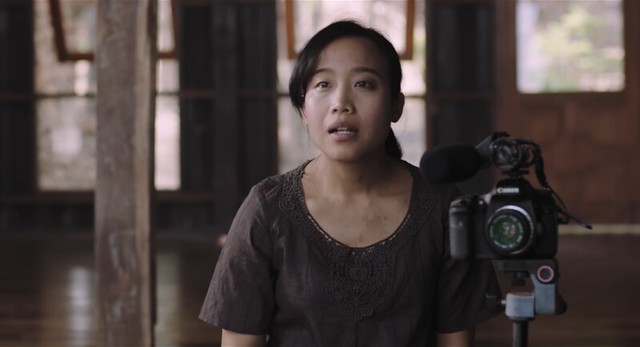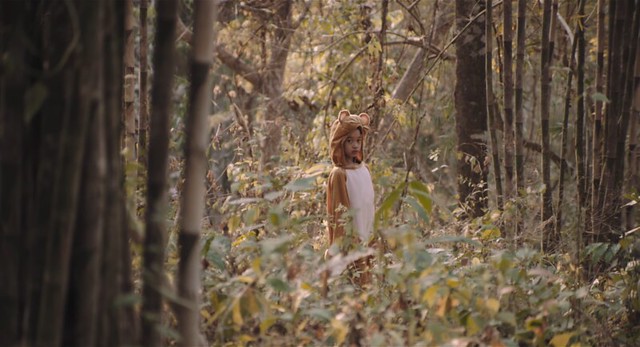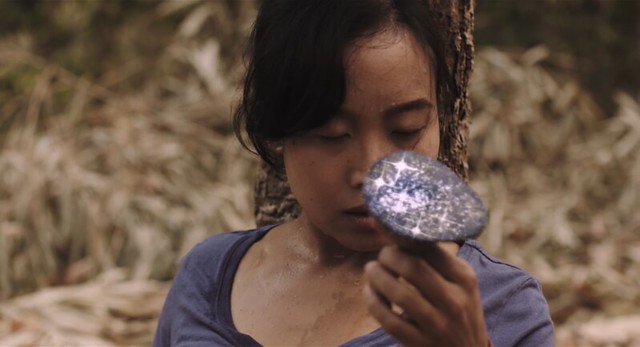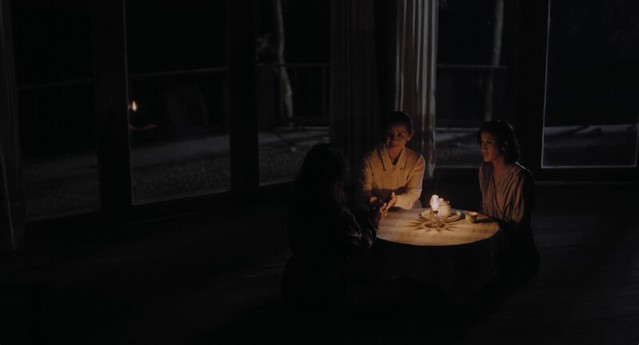








In a disjointed, fragmented, abstract, but best possible way, Anocha Suwichakornpong makes a case for moving images as a germinating force when depicting a historical event with By the Time It Gets Dark. It's also a self-reflexive contemplation on the role of a filmmaker depicting such an event.
It starts with a reenactment photo shoot of a pro-government paramilitary raid- roomful of shirtless young people lying on the ground in a warehouse with their hands tied behind their backs. A woman on the megaphone directs the soldiers with machine guns, " Be more forceful," "Hit them if you want to, " and so on. Then it's a countryside. In a large, airy, modern stone and wood house, a film director (Visra Vichit-Vadakan) is prepping her film about a former activist/survivor of the 1976 Thammasat University massacre. She brought the older woman whose memoir she's adapting down there, so she can interview her and record it on camera. But she struggles at the mere mention of her intentions- "I guess I want to make it because my life is so mundane..." She soon has a full blown breakdown in the forest and stumbles upon a magic mushroom. Roll the old science class time-lapse images of fungi in the forest.
The film takes several detours. One involves a long documentary style segment on tobacco plant harvest where we see from the harvest of the tobacco leaves to the industrial drying process. Then there is a continuing narrative involving a popstar (first seen at the tobacco farm) and his opulent lifestyle and fandom which includes a musical number ('making of' music video) in the middle of the movie. Then there is a young woman character who appears here and there, doing menial jobs - waitress in the cafe near where the filmmaker and her subject were staying, working as a busboy in the city tour boat, toilet cleaner at the airport and so on. But she turns out to be the one who instigates the breakdown of the filmmaker in the first place.
The fateful massacre where many student protesters lost their lives by the right-wing military troops, hangs over the film like a dark cloud. But Suwichakornpong treats everything non-judgmentally. Later in the film, prettier, more mannered actors repeat the scene of the director and her subject again in the same location, highlighting that the futility of adapting historical events on the screen.
The film might sound too precious on paper - those too self-aware films in love with themselves. But the result of layers of these slightly connected vignettes and visual metaphors are anything but. Images are democratic- whether it's a trashy, seemingly inconsequential pop culture, the serious historical reenactments, Buddhist temple, disco tech and pixelated visual noise have the same value. It's a very Dostoevskian concept- like a tobacco leaves and fungi, to give them meaning and purpose, these layers Suwichakornpong presents will need to sit and rot. I am just amazed by her wisdom and skills to convey this kind of complicated thoughts through film medium. By the Time It Gets Dark is an incredible achievement and one of the very best film I've seen.